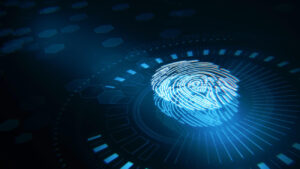A single vote in an election can make a big difference at the end. This is the main reason certain educational institutions compel students to register for a voter ID. However, there has been a long history of identity theft during elections. To avoid this issue, the idea of biometrics is proposed.
This proposal has its challenges such as cost and compatibility with the citizens. For example, if a farmer’s fingerprints are not recognizable due to hard work, then there will be an issue while voting. In that case, his/her retina are used for recognition. It does not guarantee that frauds can be put to a stop with higher use of technology.
To verify a voter, his/her identity has to be registered. They have to submit their name and date of birth along with their biometrics. The metrics used as of now are fingerprints, retina and iris prints and voice. There is work going on to introduce DNA as a metric. To identify their existence, they can simply match their metrics to the ones in the registered database. This makes it easier to vote and to also check the genuineness of the citizen.
The fingerprint images are stored in a particular format called as Wavelet Scalar Quantization (WSQ).
Applications of biometrics in elections
A process called as Biometric Voter Registration (BVR) is initiated to get the citizen to register their personal information along with their biometrics to verify their identity. After verification, the citizens are issued an ID which contains a microchip of all their information. During election, a citizen can directly use the ID to prove his citizenship and vote. This also ensures another process called Biometric Voter Verification (BVV) that matches the ID with the details and polling station allotted to the citizen to eradicate identity theft.
Limitations of biometrics in elections
- A citizen might not be able to reach the assigned center for registering the biometrics.
- Not many citizens are aware of the technology and might find it difficult to enroll.
- Biometrics alone cannot verify the age of a citizen – additional documents need to be submitted.
- The process of registering the biometrics is time-consuming and expensive.
- Due to the quality of the machines in use, the biometrics may not register properly leading to false matches and non-matches.
- The staff enrolling the citizens are often not sufficient and impatient.
Conclusion
The implementation of biometrics is not impossible but possible with certain conditions of its own. The cost should be if a certain budget. A larger timeframe has to be planned to implement the project rather than a short span. Likewise, all citizens must be aware of the bright side of biometrics along with its pros and cons to make them decide the dilemma of the issue as technology advances.
The article has been published by the editorial board of the Identity Herald. For more
information please visit www.identityherald.com




